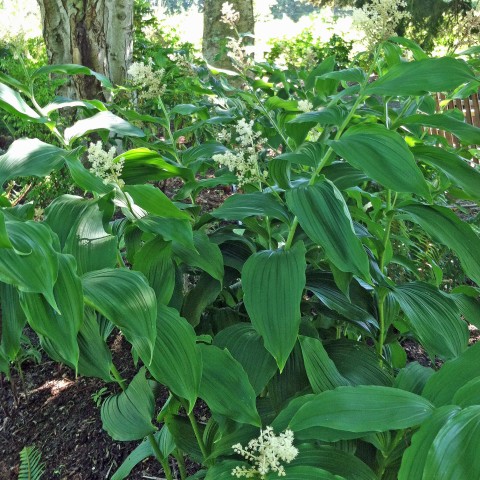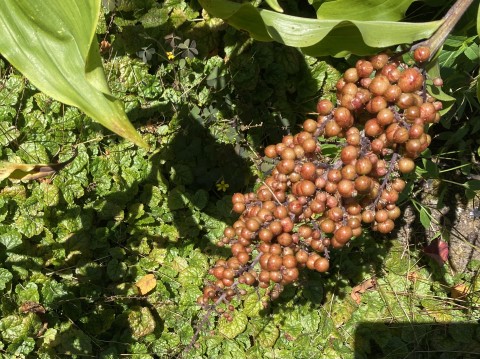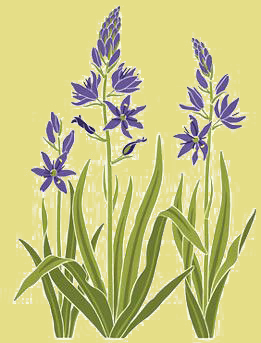False Solomon's Seal



1 - Image by www.nwplants.com
Licensed Under: CC-BY-SA-3.0 Unported
2 - Image by Lindsey Vallance
For a shady woodland site, there is no better plant than false Solomon's seal, Maianthemum racemosum. Its plumes of fragrant, white blooms, from spring to early summer, brighten a shady area and its long, arching stems are attractive in their own right. In the fall, Maianthemum racemosum has showy red berries. False Solomon's seal likes full to partial shade and moist soil, where it will spread slowly by rhizomes, forming clumps 3' tall and wide. In the wild, along the Washington and British Columbian coasts, you will find it beside streams and in moist forests. In the Buck Lake Native Plant Garden, it grows on the north side of the bed located behind the garden bench. The flowers are visited by small bees, flies and beetles and the berries are eaten by both birds and rodents. Occasionally, deer will browse the foliage.
A tea made from the roots of false Solomon's seal was used by Native American tribes to treat rheumatism and kidney trouble. The roots were mashed and used as a poultice on cuts.

